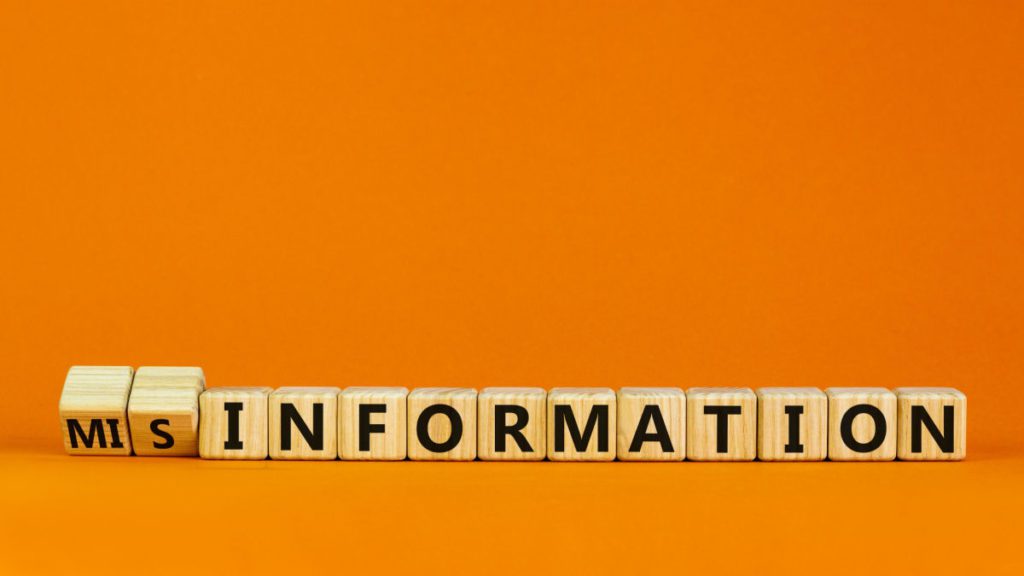Today, disinformation and misinformation have become significant problems on Web 2.0. No matter if it’s cybercrooks, troublemakers, influencers, or innocent misinformed friends, the sources of misinformation and disinformation are prolific.
The issue is prevalent today, but when you bring in the Metaverse, you’re introducing a new set of problems. This article will explain the difference between misinformation and disinformation, why the Metaverse could accelerate the problem, and how companies could develop solutions.
Misinformation vs. Disinformation
Misinformation is essentially inaccurate content. It could be a news report based on false stats and an inaccuracy repeated by a social connection. However, online misinformation is usually shared in the echo chamber of personal social media pages. Small pieces of misinformation often spread like wildfire, growing with intensity and fuelling conspiracies.
Alternatively, disinformation is information that a person or organization maliciously creates to promote a false reality. There is any number of reasons this occurs. Often it is politically or ideologically motivated. However, the result is the same. Disinformation feeds misinformation, so the outcome is still the same even when it is innocently circulated.
The internet has been a hotbed for these false statements, primarily driven by user-generated content and social media sites. The Metaverse will enable far more user interactions, access points, and advanced AI, which could potentially lead to a greater degree of misinformation and disinformation.
How Could the Metaverse Make the Problem Worse?
There have already been examples of Metaverse misinformation. Back in 2021, an AI bot developed by Sensorium Corp. misfired during a demo with a tirade of anti-vaccination propaganda. This is one incidence, but AI will undoubtedly play a significant role in accelerating the problem moving forward.
The trouble is, as companies strive to create more intuitive AI capable of supporting a Metaverse ecosystem, the more likelihood is that users fail to recognize when they are conversing with a machine. And, as we know, devices don’t always work correctly.
Beyond being capable of accidental errors, AI technologies can also be hacked by cybercriminals. Inadequate security provisions open up opportunities for nefarious attackers to spread disinformation on a massive scale.
And the potential impact doesn’t come from the technology alone. Users themselves are also likely to be catalysts for misinformation and disinformation. As well as spreading false information within their social circles, users could also deliberately create it. There is a danger that in an anonymous environment where users cannot only operate in the shadows but also in the form of avatars, it will be easier to trick other users into believing falsehoods. For example, racist propaganda could be spread by users of a certain race pretending to be another.
Ultimately, however, with so many users exposed to so much information, it will be almost impossible to police every interaction. Instead, Metaverse companies will have to develop new ways to address these issues.
How Will Metaverse Companies Address Misinformation and Disinformation?
First and foremost, there needs to be a united front. Large organizations must work collaboratively if they are to develop solutions that will work across the various virtual worlds. Some progress has already been made in this area.
Recently, GARM, the Global Alliance for Responsible Media, released a series of guidelines covering misinformation in the Metaverse. If followed, the procedures should ensure that Metaverse companies and brands embed safety mechanisms into the design of their platforms.
This is one bonus of the Metaverse when it comes to safety provisions. We already know the danger of misinformation and how it is spread. So, we can actively develop ways to avoid it. These ways could include AI-powered monitoring, kill switches for inappropriate content, in-built moderating tools, and even a Metaverse police force.
Inevitably, with these measures, one area will suffer — user privacy. Users will have to give more access to platforms if they are sufficiently protected from the kind of information that currently infects Web 2.0. Until there is another solution, this is the most likely option.
Want to compete in the Metaverse? Subscribe to the My Metaverse Minute Channel:









